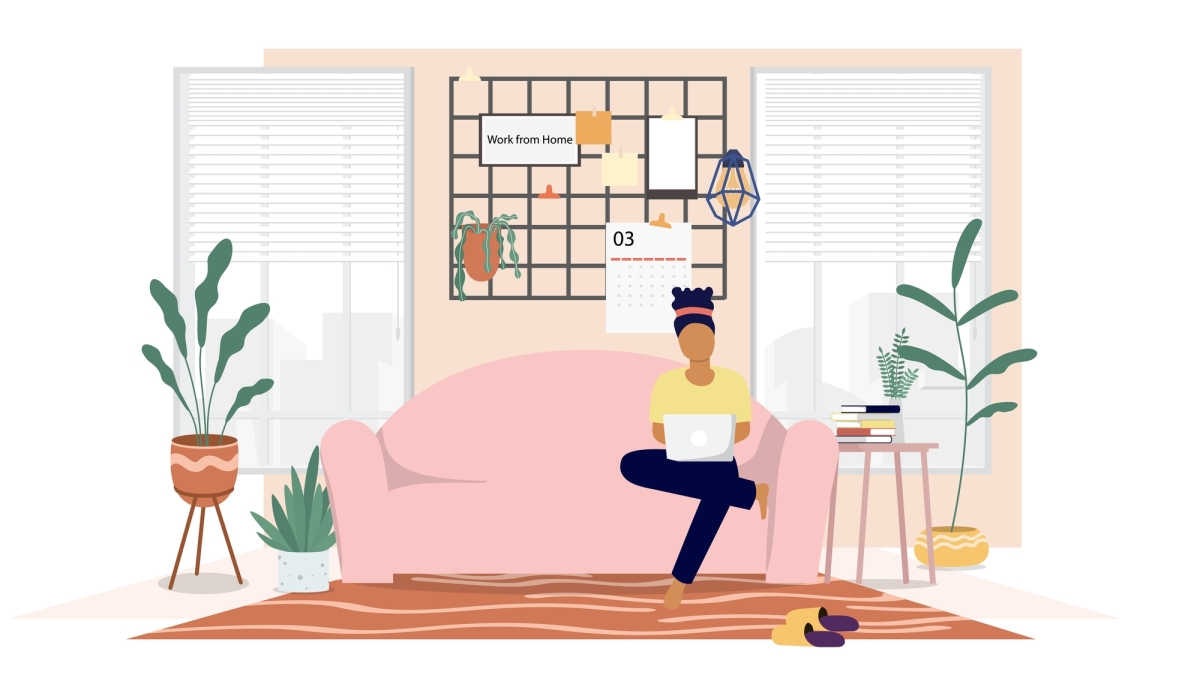Nationwide — with the uptake of coronavirus-response strategies like vaccinations, masks and distancing — more aspects of society are reopening. Select restaurants and stores are opening to full capacities, air travel volumes are increasing to near pre-pandemic levels and many Arizonians are back to commuting and reporting to in-person work on a full-time basis — but should we resist the urge to return to all of our pre-pandemic habits and choices?
Deborah Salon, a transportation planner and associate professor in Arizona State University's School of Geographical Sciences and Urban Planning, says that maintaining some prandemic-prompted habits can be beneficial to individuals, organizations and the environment, and that we have a chance now to radically rethink former norms to improve our day-to-day lives.
Salon’s recent National Science Foundation-funded COVID-19 and the Future survey project investigates long-term changes to daily habits in the U.S. caused by the pandemic. One of the most significant findings of her study, conducted in collaboration with colleagues across ASU and the University of Illinois Chicago, sheds new light on the attitudes and opportunities toward a future of less time in the office and more remote work.
ASU News spoke to Salon about her study, transportation habits during the pandemic and the opportunity for some to emerge from the pandemic with an improved quality of life.

Deborah Salon
Question: Can you tell us about your study? How did this research come to be?
Answer: When the pandemic hit in the U.S., my collaborators and I realized that it was going to impact people's transportation choices. We quickly developed and deployed our national survey of U.S. adults covering people’s transport choices before the pandemic, what they were doing during the pandemic and what they expect to do post-pandemic.
Our project aims to measure both how much transportation choices changed during the pandemic and the extent to which people expect these changes to persist as the pandemic wanes. To date, we have collected thousands of responses in three waves of survey data; we just collected our third survey wave this fall.
Q: What are some of your most significant findings?
A: There were many changes in people’s transportation choices during the pandemic, but probably the biggest change that people expect to continue into the future was more working from home. In fact, when we asked people which features of pandemic life they most value, working from home was at the top of the list for employed adults.
We found that the majority of workers experienced remote work at some point during the pandemic and most of them liked it. Pew Research also found that among those who can do their jobs remotely, nearly 90% would like to telecommute at least some of the time post-pandemic. You would expect people to like more flexibility, but another thing that we found was that for those that worked from home, a little more than 70% said that their productivity was stable or went up, and this is consistent with other study findings.
Not only did workers prove during the pandemic that they could successfully and productively work remotely, but data shows that they enjoyed it and got better at it over time.
Q: So, nearly everyone who could do their job remotely worked at some point from home, most enjoyed it, were productive and want to continue to work remotely in some form post-pandemic. What does this mean for employers?
A: The evidence suggests that working from home doesn't necessarily lead to reductions in overall productivity for workers, so why not try to figure out how to continue to offer this flexibility?
Another point that I think is important is that one of the reasons for that productivity result may be that happier workers are actually more productive. That's been found in prior research, and it makes sense. The more you can have happy or satisfied workers, the more those workers are going to be with your company longer-term.
So with that, I think it's a win-win scenario: Let people continue to have some level of flexibility working from home while still thinking about how to provide customer service, and whatever else you may need to allow people to do their job duties.
Q: Given your findings, why do you think some employers may still be resistant to work-from-home policies?
A: When I started to hear news that there are companies calling their employees back to the office 100% of the time, that just seemed really short-sighted to me.
My best thought is that some employers may be concerned about their customers not being able to handle or feel comfortable with the remote customer service experience. That comes up in the university setting, and I've heard anecdotally that it comes up in health care settings. But I think that's only part of it. I think for some companies, it's that they aren’t ready to spend the time and energy to reorganize their workflows so that a partially or fully remote workforce makes sense. Going back to how they did things in 2019 might just seem easier.
I really want to encourage people who are in a position to make decisions about whether people who work for them have the option to work remotely to try to work with their employees to come up with creative solutions together.
Q: Where should employers start?
A: Look at the data you have from the pandemic period when at least some people were working remotely, and see if in fact they did experience a problem with a drop in productivity.
If they did, investigate. Was it because of the remote working situation or was it because there was a pandemic, or was it because they didn't have the right procedures in place to support remote work? There are a lot of reasons that it might be, and even if they did see a drop in productivity, I wouldn't abandon further thinking about remote work for employees.
It's really about quality of life for your employees. But it could also mean good things for employers: potential for enhanced productivity and possibly saving money on office space. Try to think creatively about how to make sure everybody's goals are met.
Q: Some companies have announced that they will operate fully in-person, others have announced that they will be fully remote and others have taken a hybrid approach, allowing employees to work from home some days and in the office the rest. Is there a certain trend you are seeing about what the future of remote work may look like post-pandemic?
A: That’s a good question. I think it's going to be tailored to the particular job and worker. For jobs that can easily be done at least partially remotely, I would expect and hope that people will end up with a situation where it's a combination of either fully remote or hybrid. I do think there is some value in sometimes seeing your co-workers in person. I hope that most employers will decide to offer this flexibility, and it'll just be a question of whether it is full time or part time.
Overall, I think there's a really great opportunity right now to rethink and reorganize how we do work and make it better for everybody. I don't think we should let that pass without taking advantage of it.
Top photo courtesy of depositphotos.com
More Health and medicine

80 years of pioneering speech and hearing services for the community
Over 80 years ago, in 1937, the first course in communication disorders, Speech Correction, was offered at Arizona State University. As additional courses were added and programs in speech…

First 2 degree offerings from ASU Health available in fall 2025
Editor’s note: This story is featured in the 2024 year in review.The first degree offerings from ASU Health will help students find jobs in the modernized health care system.The one-…

ASU study uses new biomaterials for wound healing
A minor cut often heals within days, vanishing without a trace. Yet, wound healing and tissue repair are complex biological processes, revealing the body’s remarkable regenerative capacity.In a new…
